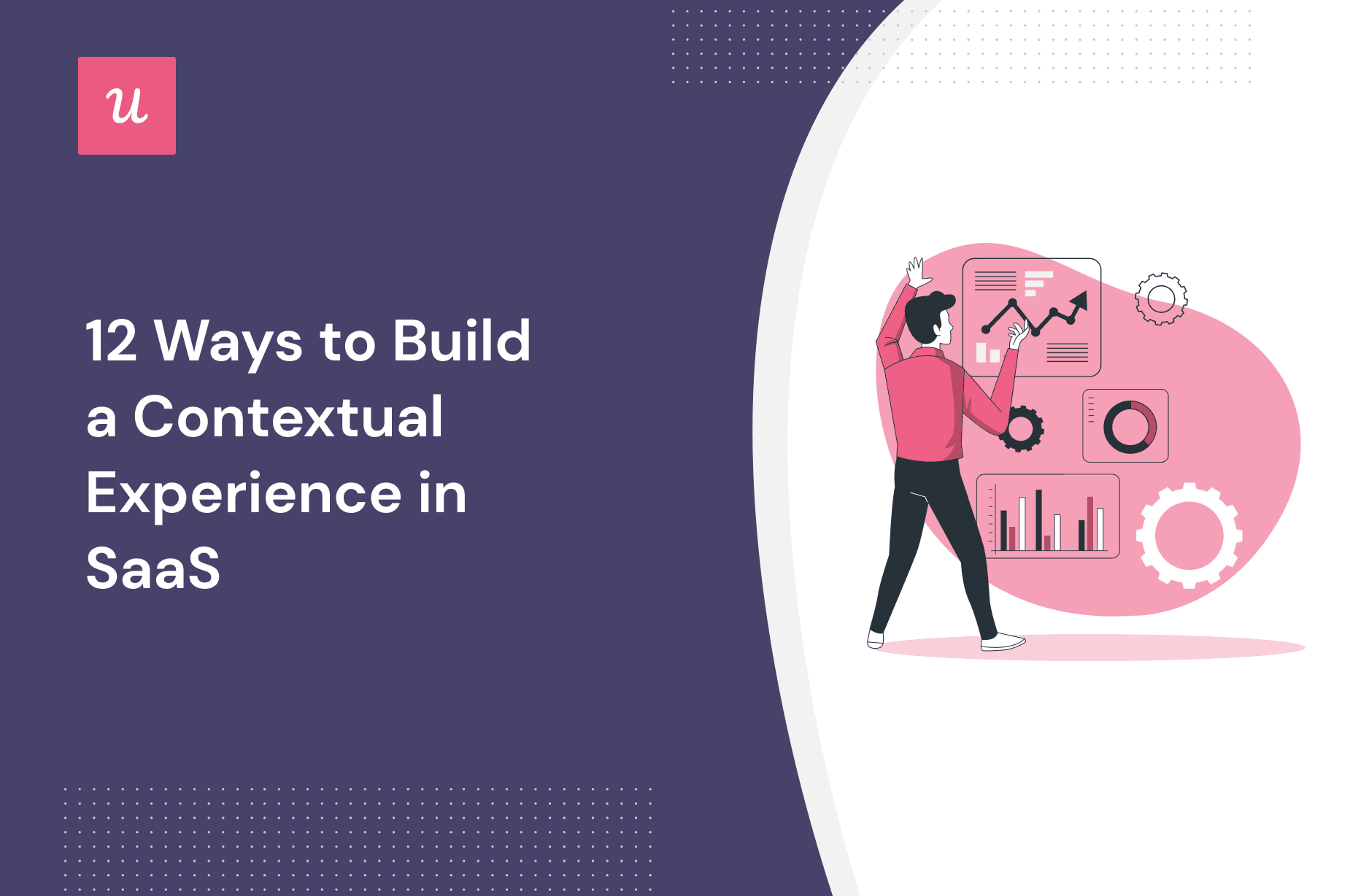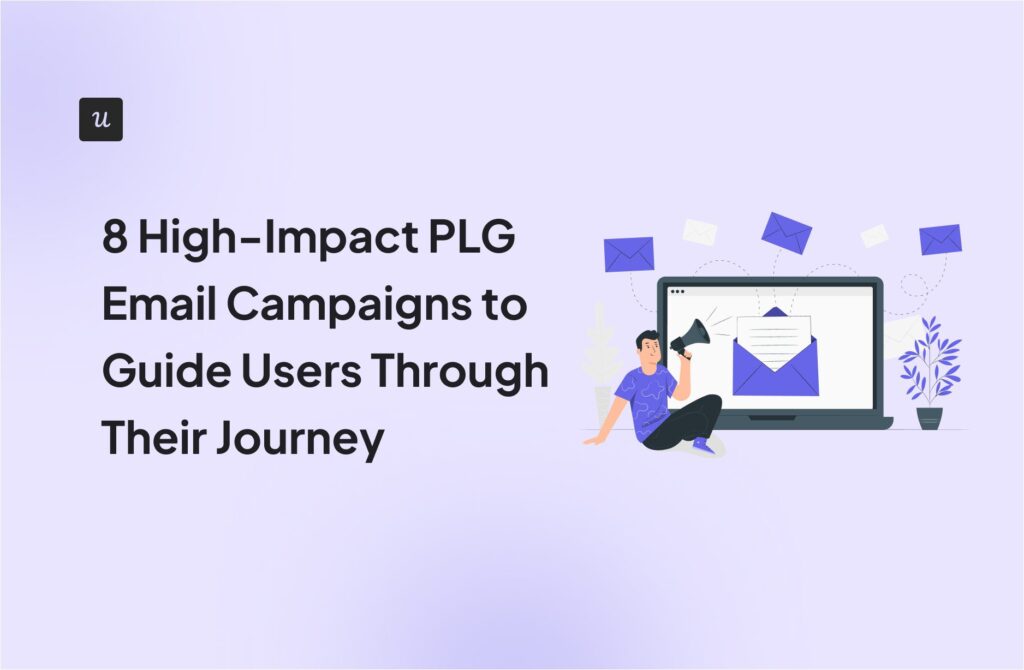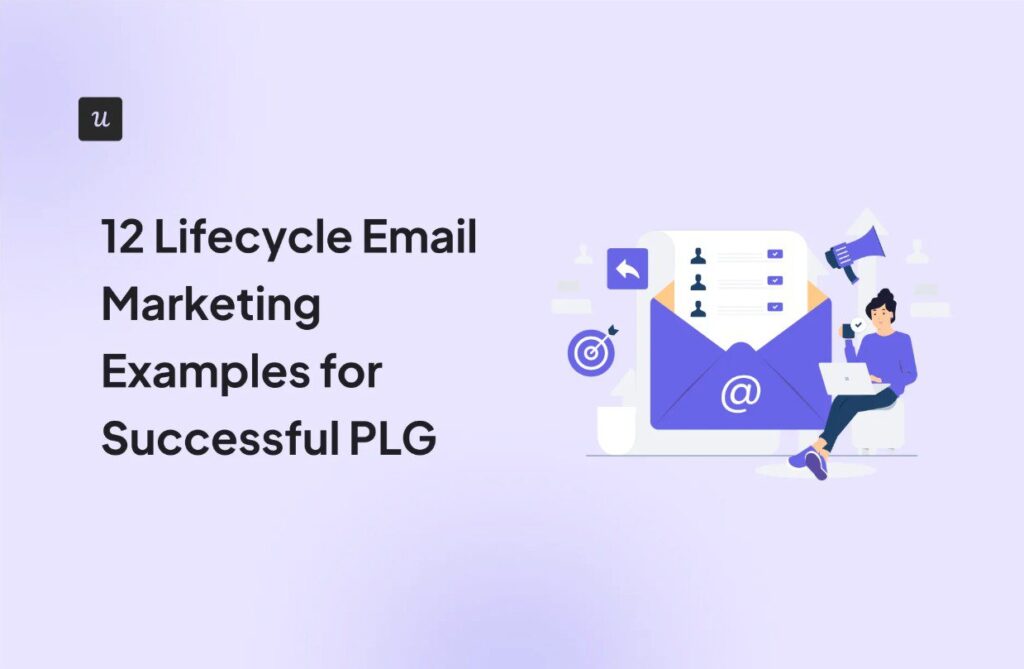
A contextual experience gives customers the guidance they need to maximize your tool and progress further in their journey. It will increase customer satisfaction and contribute to higher retention.
Read on to find 12 practical ways to provide contextual experiences and help users navigate every stage of the customer journey.
Get The Insights!
The fastest way to learn about Product Growth, Management & Trends.
TL;DR
- Contextual experience is about guiding users through a software application, by providing the right message, to the right user, and within the right context.
- 12 Best contextual experiences for SaaS businesses:
- Use welcome screens to branch the onboarding experience
- Trigger checklists for new users to drive success during the primary onboarding process
- Use an interactive walkthrough to guide users to engage with a feature for the first time
- Introduce users to advanced features as they progress through the journey
- Make important announcements using banners
- Reduce friction on specific UI pages with hotspots
- Launch celebratory modals when customers hit a milestone in the onboarding process
- Show different modules in your resource center based on user segment to facilitate better learning and understanding
- Deploy customized emails in response to in-app behavior and help users learn based on their current context
- Send exit surveys when users hit the cancel button
- Segment survey respondents to trigger personalized follow-up messages
- Prompt an upgrade by showcasing a relevant feature at the right time
- Userpilot can help you create contextual experiences by offering UI patterns, segmentation options, and survey templates. Book a demo today to start your journey.
What is a contextual experience?
A contextual experience provides users with the right information, features, and functionality where and when needed. The goal is to enhance satisfaction, productivity, and engagement.
12 Best contextual experiences in SaaS
To provide contextual experiences across the customer journey, you need to implement a series of tactics because the user needs changing guidance as they become more experienced with your product.
Below are 12 tactics you can begin applying to your SaaS:
1. Use welcome screens to branch the onboarding experience
A welcome survey lets you collect user info at the beginning of their journey. This is vital as you’ll use the data to guide users on different paths based on different contexts.
Branching your onboarding this way makes the product experience more relevant to users, reduces the time to value, and increases your product adoption rate.

2. Trigger checklists for new users to drive success during primary onboarding
An onboarding checklist provides contextual guidance and helps users make sense of your product by actually taking action.
The best time to trigger this checklist is immediately after the user sets up their account (it should come after the welcome survey if you have one).
Don’t make the checklist cumbersome. Include just 3-4 action points that are relevant to different user personas and will help drive them to the activation point.

3. Use an interactive walkthrough to guide users to engage with a feature for the first time
While checklists point users to specific action steps, interactive walkthroughs handhold customers and show them step-by-step how to effectively use a feature to get value from it.
Walkthroughs are highly contextual because they’re triggered when users interact with a feature for the first time and not randomly. Done well, your walkthroughs will remove friction and help costumes adopt features faster.

4. Introduce users to advanced features as they progress through the journey
Rushing to introduce your advanced functionalities to unready users will only overwhelm them, and it can be a huge barrier to customer engagement.
Reserve advanced features for secondary and tertiary onboarding. Only trigger the flows when customers have settled nicely into your tool and actively use the basic features.
So, how do you show your advanced secondary features and drive repeated value for ready customers?
Simple: trigger in-app messages such as tooltips, modals, and slideouts briefly explaining how the feature is relevant to the use cases.

5. Make important announcements using banners
A notification banner is a small bar that usually appears at the top of the page and is mostly used to communicate urgent information.
Use banners to make important announcements without disrupting the user experience. For example, when a user’s credit card declines in the course of making renewals, communicate that with them using a banner. This will help users take action and reduce involuntary churn.
Give your banners clear CTAs where applicable, and ensure the message is easily dismissable, as in the following example:

6. Reduce friction on specific UI pages with hotspots
Provide the needed guidance contextually using hotspots instead of cluttering each UI with tons of info that will only overwhelm users. This will reduce the cognitive load on your users and make their in-app experience much more pleasant.
Set your hotspots to only trigger when the action they’re about to prompt is relevant to the user at that specific moment.

7. Launch celebratory modals when customers hit a milestone
Milestones celebrations acknowledge success and give users a dopamine hit, motivating them to continue using the product and reach more milestones.
So, decide on the key milestones along the user journey and design celebratory modals that customers will love. Common milestones include core features adoption, account renewal, and advocacy (leaving you a positive review).
Your celebration modal is also a good opportunity to prompt the next action. For example, Calendly congratulates users on getting the basics of the product and provides links to begin another milestone.

8. Show different modules in your resource center based on user segment
Resource centers/knowledge bases are meant to educate customers and help them solve common issues without contacting support. However, this self-serve portal can quickly become loaded with information and confuse or delay users when searching for quick guides.
A good way around it is to show help center content based on where the user is in their journey or show only relevant guides based on the app page the user is on. Doing this helps customers get timely help and improves their overall product experience.

9. Deploy customized emails in response to in-app user behavior
Use webhooks to send a series of emails triggered by certain behaviors.

Each email should include a lesson specific to a task within the app and a CTA that takes users straight to that feature, allowing them to execute that task immediately.
For example, Airfocus sends highly personalized emails like the one below to users that successfully create an account but don’t use it after a specific number of days.

The email above didn’t direct users to the app, but that’s an option you want to explore. You could use a similar pattern, end the email with a link to a specific feature of your app, and also add that users can reply to the email if there’s anything they’re struggling with.
10. Send exit surveys when users hit the cancel button
Exit or cancellation surveys help you understand the reasons behind churn and improve to reduce it.
These surveys are also an opportunity to win customers over by offering personalized alternatives to canceling.
It goes without saying that the only time to trigger cancellation surveys is when users hit the cancel button.

11. Segment survey respondents to trigger personalized follow-up messages
An example of this would be segmenting NPS responses based on scores. Userpilot lets you do so with ease:

NPS has three response categories: Promoters, passives, and detractors.
Promoters are your raving fans. They love your tool and will freely recommend it. Trigger a modal for promoters with a thank-you note, a small gift, and a review request.

Detractors are user groups that give you the lowest NPS rating. They’re dissatisfied with your product. Send detractors an email offering a one-on-one meeting to learn more about their issues.

Passives are the third response group. They’re in the middle—not sure if they’ll recommend your tool or not. Trigger a follow-up message asking passives for more detailed feedback to learn the reason behind their score.

12. Prompt an upgrade by showcasing a relevant feature at the right time
Trigger an in-app message at a high-intent moment to increase the chance of the user taking action.
An example of a high-intent moment is when free users have reached a usage limit or are using aspects of your tool that upgrading will help them maximize.
Userpilot triggers this account expansion prompt when customers are creating flows. The tooltip lets them know an upgrade allows more control, and that’s something the ideal user will love.

Conclusion
The key to delivering contextual experiences is to collect user data for personalization.
You’ll need a good product growth tool that lets you understand your user behavior and segment them to trigger tailored experiences.
Userpilot is that tool. Asides from behavior tracking, our platform lets you collect and analyze customer feedback and trigger different in-app messaging formats.
Book a demo now to see how Userpilot helps to create contextual experiences with ease.





